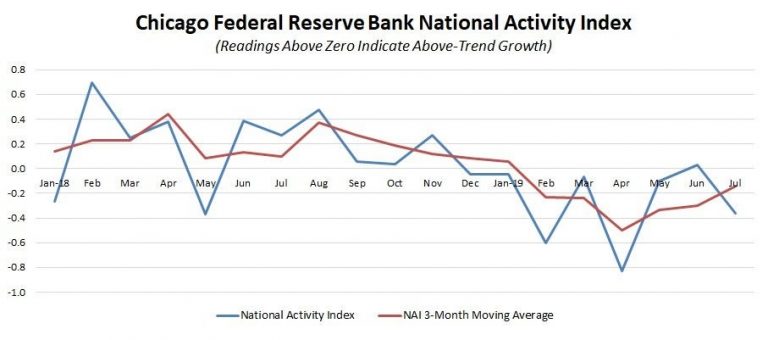Will Tariffs Cripple Big Tech's Advertising Revenue?

Table of Contents
Increased Costs for Ad Platforms and Advertisers
Tariffs directly impact the financial health of Big Tech and its advertising clients in several key ways. The increased cost of doing business translates into a less profitable environment for everyone involved.
Higher Prices for Hardware and Services
Tariffs on imported components—essential for the infrastructure of the digital advertising world—significantly increase the cost of building and maintaining ad platforms. This includes:
- Increased server costs: The backbone of any major tech company's operations, servers are often imported, making them more expensive with tariffs.
- Higher cloud computing expenses: Cloud services rely heavily on imported hardware and components, leading to increased costs passed on to tech companies.
- Elevated maintenance fees: The increased cost of replacement parts and repairs further inflates operational expenses.
This translates to reduced profit margins for tech companies and, ultimately, potentially higher advertising prices for clients. The ripple effect is felt across the entire digital advertising ecosystem.
Supply Chain Disruptions
Tariffs don't just increase prices; they disrupt global supply chains, creating significant challenges for Big Tech. These disruptions include:
- Delays in component delivery: Tariffs lead to longer lead times for crucial components, delaying product launches and platform upgrades.
- Shortages of critical materials: Tariffs can cause shortages of essential materials, hindering production and potentially leading to higher prices.
- Increased shipping costs: The cost of transporting goods internationally increases, adding to the overall expense of running ad platforms.
These disruptions lead to operational inefficiencies and further contribute to higher prices, impacting both Big Tech's profitability and advertisers' budgets.
Impact on Cross-Border Advertising and Data Flow
The complexities of international trade are significantly impacting the digital advertising landscape, affecting how data is handled and shared across borders.
Restrictions on Data Transfer
Tariffs and trade tensions often lead to increased scrutiny of data transfer practices, impacting the personalized advertising that defines much of today's digital marketing. This increased scrutiny results in:
- Increased scrutiny of data privacy agreements: Companies are subjected to more rigorous audits and compliance checks, adding to their costs and administrative burdens.
- Delays in data processing: Increased regulatory hurdles slow down the process of gathering, processing, and analyzing data for advertising purposes.
- Potential limitations on cross-border data flows: Stricter regulations may restrict the free flow of data across borders, directly impacting the efficiency of targeted advertising campaigns.
These restrictions can hamper the effectiveness of personalized advertising campaigns, reducing ROI for advertisers and impacting the revenue of the platforms.
Reduced Reach for International Advertisers
Tariffs might make it less appealing for international businesses to advertise on platforms based in countries imposing tariffs. This could manifest as:
- Reduced international ad spending: Businesses may choose to redirect their advertising budgets to platforms in regions with fewer trade barriers.
- Shrinking ad revenue for tech companies: Less international spending directly translates to reduced revenue for major digital advertising platforms.
- Decreased market reach for advertisers: Businesses relying on international advertising reach may find their campaigns significantly hampered.
This creates a ripple effect that negatively impacts the entire digital advertising ecosystem.
Shifting Advertising Strategies
To mitigate the impact of tariffs, companies are already adapting their advertising strategies, demonstrating a level of agility in the face of economic uncertainty.
Increased Focus on Domestic Markets
To reduce reliance on international revenue streams vulnerable to tariffs, companies are turning their attention inward:
- Increased investment in local advertising campaigns: A shift toward focusing on domestic markets is a natural consequence of international trade uncertainty.
- Prioritizing domestic partnerships: Collaboration with local businesses and influencers becomes increasingly important to maintain revenue streams.
- Adaptation of advertising strategies for regional audiences: Marketing messages and strategies need to be tailored to the specific nuances of domestic markets.
Exploration of Alternative Advertising Channels
Advertisers are diversifying their strategies to lessen dependence on platforms impacted by tariffs:
- Increased investment in social media advertising: Platforms not as directly impacted by tariffs become more attractive.
- Exploration of programmatic advertising alternatives: Companies are exploring diverse programmatic buying options to diversify their reach and reduce reliance on a single platform.
- Diversification of ad spending across platforms: Spreading advertising budgets across multiple platforms reduces risk and mitigates the impact of tariffs on any one platform.
The Potential for Price Increases and Reduced Consumer Spending
The increased costs associated with tariffs are unlikely to remain absorbed by Big Tech companies indefinitely, with consequences felt by both businesses and consumers.
Passing on Increased Costs
To maintain profitability, tech companies may pass increased costs to advertisers, leading to higher advertising rates:
- Increased CPC (cost-per-click): The cost of each click on an advertisement increases, impacting advertiser budgets.
- Higher CPM (cost-per-mile): The cost of displaying an advertisement to 1,000 users increases, affecting advertising campaign profitability.
- Potentially decreased ROI (return on investment) for advertisers: Higher costs and potentially reduced reach might negatively impact the return on advertising investments.
These price increases can discourage businesses from increasing ad spending, creating a vicious cycle.
Reduced Consumer Demand
Higher prices for goods and services due to tariffs also impact consumer spending, resulting in:
- Decreased consumer disposable income: Tariffs increase the cost of goods, leaving consumers with less money to spend.
- Reduced online shopping: Higher prices may reduce online purchases, directly impacting online advertising revenue.
- Decline in ad engagement and conversion rates: Reduced consumer spending can lower the effectiveness of advertising campaigns.
Conclusion
The impact of tariffs on Big Tech's advertising revenue is complex and multifaceted. Increased costs, supply chain disruptions, and regulatory hurdles all contribute to a potentially challenging environment for digital advertising. While companies may adapt through strategic shifts and diversification, the overall effect could be reduced revenue, higher advertising costs, and a more fragmented digital marketing landscape. Understanding the potential consequences of tariffs is crucial for both Big Tech companies and advertisers. Stay informed about the evolving trade landscape and carefully strategize your digital advertising approach to navigate this uncertain environment. Learn more about how tariffs may impact your Big Tech advertising revenue and develop effective mitigation strategies.

Featured Posts
-
 Hanoi And Hai Phong To Be Linked By New Luxury Train Service This May
Apr 26, 2025
Hanoi And Hai Phong To Be Linked By New Luxury Train Service This May
Apr 26, 2025 -
 Majority To Celebrate King Day Yet 22 Seek Holidays End
Apr 26, 2025
Majority To Celebrate King Day Yet 22 Seek Holidays End
Apr 26, 2025 -
 Vivienne Westwoods Debut Bridal Fashion Show A Groundbreaking Event
Apr 26, 2025
Vivienne Westwoods Debut Bridal Fashion Show A Groundbreaking Event
Apr 26, 2025 -
 Deion Sanders Addresses Nfl Teams Interest In Son Shedeur
Apr 26, 2025
Deion Sanders Addresses Nfl Teams Interest In Son Shedeur
Apr 26, 2025 -
 American Jorgenson Retains Paris Nice Championship
Apr 26, 2025
American Jorgenson Retains Paris Nice Championship
Apr 26, 2025
